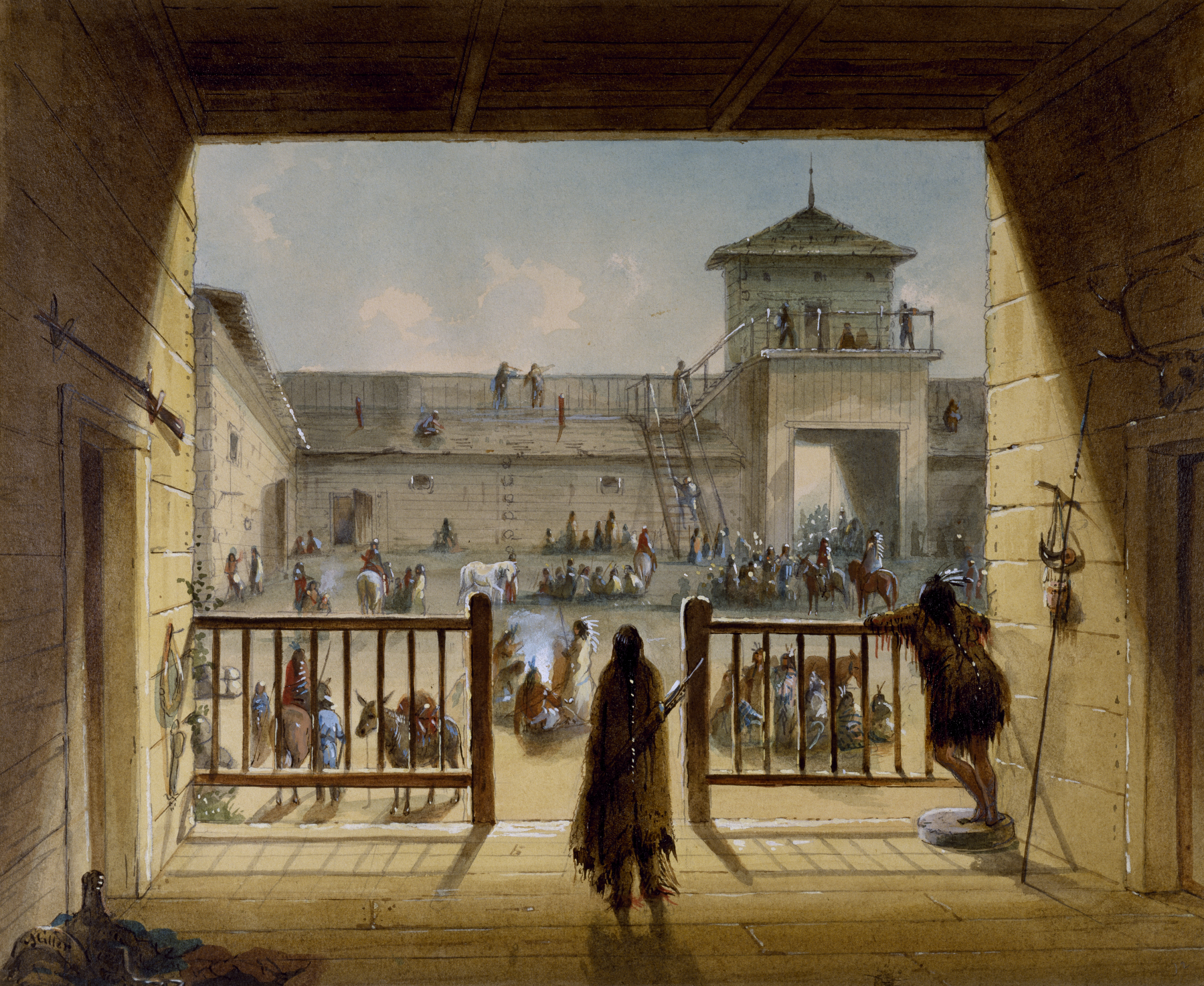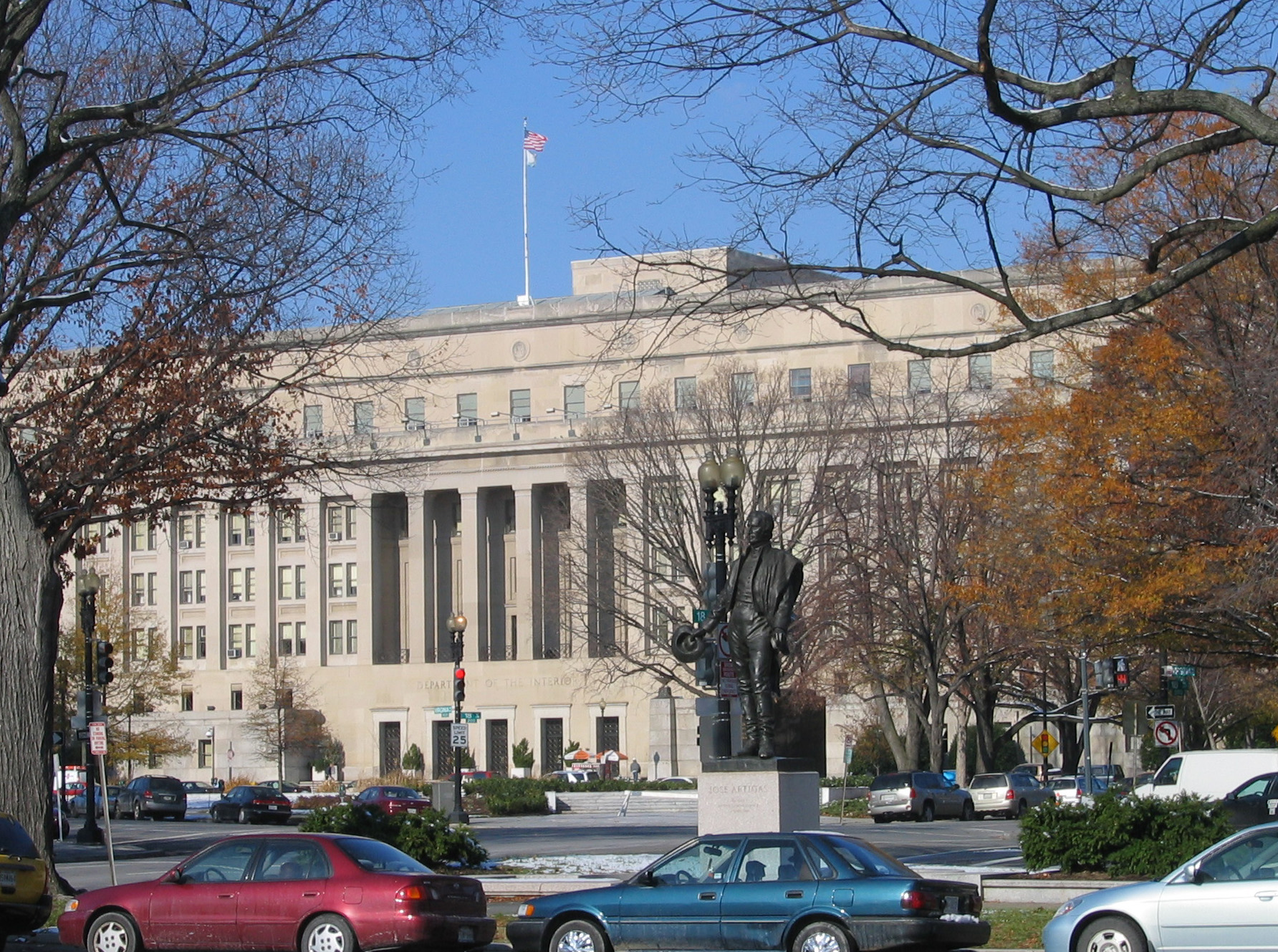|
Fontenelle's Post
Fontenelle's Post, first known as Pilcher's Post, and the site of the later city of Bellevue, was built in 1822 in the Nebraska Territory by Joshua Pilcher, then president of the Missouri Fur Company. Located on the west side of the Missouri River, it developed as one of the first European-American settlements in Nebraska. The Post served as a center for trading with local Omaha, Otoe, Missouri, and Pawnee tribes. In 1828 Lucien Fontenelle, a French-American fur trader representing the American Fur Company, bought the post and became the lead agent. In 1832 he sold the post to the US Government, which used it for the Missouri River Indian Agency (or Bellevue Agency) until about 1842., ''Nebraska National Register Sites in Sarpy County'', 17 Aug 2007, accessed 9 Aug 2008 The Post also served as the first home of Moses and Eliza Merrill, Baptist missionaries who arrived in 1833. The US Indian agent offered them the trading post building as a temporary home. In 1835 the Merr ... [...More Info...] [...Related Items...] OR: [Wikipedia] [Google] [Baidu] |
Pawnee01
Pawnee initially refers to a Native American people and its language: * Pawnee people * Pawnee language Pawnee is also the name of several places in the United States: * Pawnee, Illinois * Pawnee, Kansas * Pawnee, Missouri * Pawnee City, Nebraska * Pawnee, Ohio * Pawnee, Oklahoma * Pawnee, Texas * Pawnee National Grassland, Colorado * Pawnee Township (other) * Pawnee County (other) Pawnee may also refer to: * Pawnee Agency and Boarding School Historic District, an area in Pawnee County, Oklahoma * Pawnee Aviation, an American helicopter manufacturer * Piper PA-25 Pawnee, agricultural aircraft produced by Piper Aircraft * Piper PA-36 Pawnee Brave, agricultural aircraft produced by Piper Aircraft * Hiller VZ-1 Pawnee, experimental aircraft * Pawnee (Parks and Recreation) Pawnee, Indiana ( ) is the fictional city in which the NBC comedy series ''Parks and Recreation'' is set. Since the show's start in 2009, the city's colorful history and inhabitants have been ... [...More Info...] [...Related Items...] OR: [Wikipedia] [Google] [Baidu] |
New Orleans
New Orleans ( , ,New Orleans . ; french: La Nouvelle-Orléans , es, Nueva Orleans) is a consolidated city-parish located along the in the southeastern region of the U.S. state of Louisiana. With a population of 383,997 according to the 2020 U.S. census, [...More Info...] [...Related Items...] OR: [Wikipedia] [Google] [Baidu] |
Joseph LaFlesche
Joseph LaFlesche, also known as ''E-sta-mah-za'' or Iron Eye (1822–1888), was the last recognized head chief of the Omaha tribe of Native Americans who was selected according to the traditional tribal rituals. The head chief Big Elk had adopted LaFlesche as an adult into the Omaha and designated him in 1843 as his successor. LaFlesche was of Ponca and French Canadian ancestry; he became a chief in 1853, after Big Elk's death. An 1889 account said that he had been the only chief among the Omaha to have known European ancestry. In 1854 LaFlesche was among the seven Omaha chiefs in the delegation who went to Washington, DC for final negotiations and signed the treaty with the United States by which they ceded most of the Omaha territory. About 1856, he led his people in relocating to the Omaha reservation in what is now northeastern Nebraska. LaFlesche served as principal chief until 1888. He led during the Omaha transition to the reservation and other major social changes. Early ... [...More Info...] [...Related Items...] OR: [Wikipedia] [Google] [Baidu] |
Fort Atkinson (Nebraska)
Fort Atkinson was the first United States Army post to be established west of the Missouri River in the unorganized region of the Louisiana Purchase of the United States. Located just east of present-day Fort Calhoun, Nebraska, the fort was erected in 1819 and abandoned in 1827. The site is now known as Fort Atkinson State Historical Park and is a National Historic Landmark. A replica fort was constructed by the state at the site during the 1980s–1990s. The post, which included soldiers, traders, trappers, and other frontier people, has been credited by the Nebraska State Legislature as the first town in Nebraska. Founded almost 30 years before the creation of the Nebraska Territory, Fort Atkinson had more than 1,000 residents. It included a brickyard, lime kiln, stone quarry, grist mill, saw mill, and cooper shop.(1912) ''Bulletin.'' Issues 2. Nebraska State Legislature. p. 7. Lewis and Clark The site that would become Fort Atkinson was the Council Bluff (not to be confus ... [...More Info...] [...Related Items...] OR: [Wikipedia] [Google] [Baidu] |
Iowa
Iowa () is a U.S. state, state in the Midwestern United States, Midwestern region of the United States, bordered by the Mississippi River to the east and the Missouri River and Big Sioux River to the west. It is bordered by six states: Wisconsin to the northeast, Illinois to the east and southeast, Missouri to the south, Nebraska to the west, South Dakota to the northwest, and Minnesota to the north. During the 18th and early 19th centuries, Iowa was a part of Louisiana (New France), French Louisiana and Louisiana (New Spain), Spanish Louisiana; its Flag of Iowa, state flag is patterned after the flag of France. After the Louisiana Purchase, people laid the foundation for an agriculture-based economy in the heart of the Corn Belt. In the latter half of the 20th century, Iowa's agricultural economy transitioned to a diversified economy of advanced manufacturing, processing, financial services, information technology, biotechnology, and Sustainable energy, green energy productio ... [...More Info...] [...Related Items...] OR: [Wikipedia] [Google] [Baidu] |
John Cabanné
John is a common English name and surname: * John (given name) * John (surname) John may also refer to: New Testament Works * Gospel of John, a title often shortened to John * First Epistle of John, often shortened to 1 John * Second Epistle of John, often shortened to 2 John * Third Epistle of John, often shortened to 3 John People * John the Baptist (died c. AD 30), regarded as a prophet and the forerunner of Jesus Christ * John the Apostle (lived c. AD 30), one of the twelve apostles of Jesus * John the Evangelist, assigned author of the Fourth Gospel, once identified with the Apostle * John of Patmos, also known as John the Divine or John the Revelator, the author of the Book of Revelation, once identified with the Apostle * John the Presbyter, a figure either identified with or distinguished from the Apostle, the Evangelist and John of Patmos Other people with the given name Religious figures * John, father of Andrew the Apostle and Saint Peter * Pope John ... [...More Info...] [...Related Items...] OR: [Wikipedia] [Google] [Baidu] |
Peter Sarpy
Peter Abadie Sarpy (1805–1865) was the French-American owner and operator of several fur trading posts, essential to the development of the Nebraska Territory, and a thriving ferry business. A prominent businessman, he helped lay out the towns of Bellevue and Decatur, Nebraska. Nebraska's legislature named Sarpy County after him in honor of his service to the state. Biography Peter A. Sarpy was likely born in St. Louis, Missouri on November 3, 1805. He was christened Pierre Sylvester Grégoire Sarpy, but he later anglicized his name. He also took his mother's maiden name, L'Abadie, using "A" for his middle initial. Peter's father was Grégoire Sarpy, who died in 1824. Peter had two brothers. The family was French Creole from Louisiana. They joined other ethnic French in migrating to the growing town of St. Louis after the Louisiana Purchase in 1803 by the United States. The lucrative fur trade and much of the economy of St. Louis was originally dominated by ethnic French fam ... [...More Info...] [...Related Items...] OR: [Wikipedia] [Google] [Baidu] |
Fort Laramie
Fort Laramie (founded as Fort William and known for a while as Fort John) was a significant 19th-century trading-post, diplomatic site, and military installation located at the confluence of the Laramie and the North Platte rivers. They joined in the upper Platte River Valley in the eastern part of the present-day U.S. state of Wyoming. The fort was founded as a private trading-post in the 1830s to service the overland fur-trade; in 1849, it was purchased by the United States Army. The site was located east of the long climb leading to the best and lowest crossing-point over the Rocky Mountains at South Pass and became a popular stopping-point for migrants on the Oregon Trail. Along with Bent's Fort on the Arkansas River, the trading post and its supporting industries and businesses were the most significant economic hub of commerce in the region. Fort William was founded by William Sublette and his partner Robert Campbell in 1834. In the spring of 1835, Sublette sold ... [...More Info...] [...Related Items...] OR: [Wikipedia] [Google] [Baidu] |
Bureau Of Indian Affairs
The Bureau of Indian Affairs (BIA), also known as Indian Affairs (IA), is a United States federal agency within the Department of the Interior. It is responsible for implementing federal laws and policies related to American Indians and Alaska Natives, and administering and managing over of land held in trust by the U.S. federal government for Indian Tribes. It renders services to roughly 2 million indigenous Americans across 574 federally recognized tribes. The BIA is governed by a director and overseen by the assistant secretary for Indian affairs, who answers to the secretary of the interior. The BIA works with tribal governments to help administer law enforcement and justice; promote development in agriculture, infrastructure, and the economy; enhance tribal governance; manage natural resources; and generally advance the quality of life in tribal communities. Educational services are provided by Bureau of Indian Education—the only other agency under the assistant s ... [...More Info...] [...Related Items...] OR: [Wikipedia] [Google] [Baidu] |
Gens
In ancient Rome, a gens ( or , ; plural: ''gentes'' ) was a family consisting of individuals who shared the same nomen and who claimed descent from a common ancestor. A branch of a gens was called a ''stirps'' (plural: ''stirpes''). The ''gens'' was an important social structure at Rome and throughout Italia during the period of the Roman Republic. Much of individuals' social standing depended on the gens to which they belonged. Certain gentes were classified as patrician, others as plebeian; some had both patrician and plebeian branches. The importance of membership in a gens declined considerably in imperial times, although the ''gentilicium'' continued to be used and defined the origins and dynasties of Roman emperors. ''Harper's Dictionary of Classical Literature and Antiquities'', Second Edition, Harry Thurston Peck, Editor (1897) '' Oxford Classical Dictionary'', 2nd Ed. (1970) Origins The word ''gens'' is sometimes translated as "race", or "nation", mean ... [...More Info...] [...Related Items...] OR: [Wikipedia] [Google] [Baidu] |
Patrilineal
Patrilineality, also known as the male line, the spear side or agnatic kinship, is a common kinship system in which an individual's family membership derives from and is recorded through their father's lineage. It generally involves the inheritance of property, rights, names, or titles by persons related through male kin. This is sometimes distinguished from cognate kinship, through the mother's lineage, also called the spindle side or the distaff side. A patriline ("father line") is a person's father, and additional ancestors, as traced only through males. Traditionally and historically people would identify the person's ethnicity with the father's heritage and ignore the maternal ancestry in the ethnic factor. In the Bible In the Bible, family and tribal membership appears to be transmitted through the father. For example, a person is considered to be a priest or Levite, if his father is a priest or Levite, and the members of all the Twelve Tribes are called Israelites becau ... [...More Info...] [...Related Items...] OR: [Wikipedia] [Google] [Baidu] |



